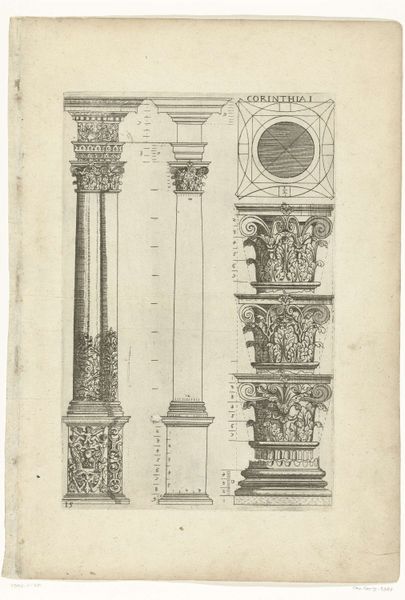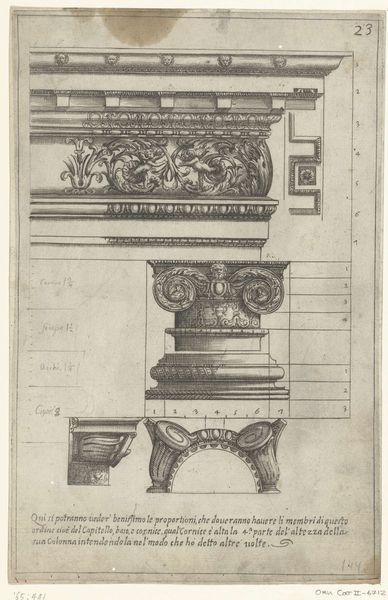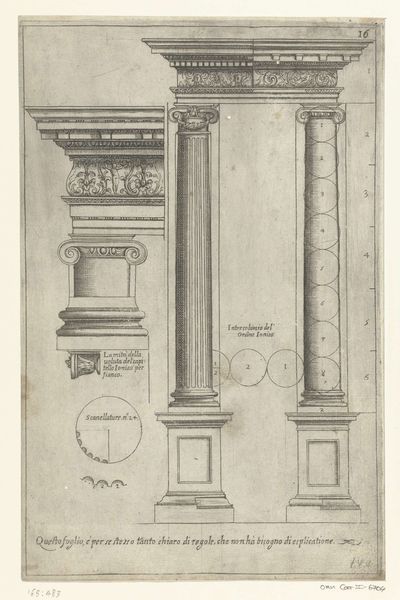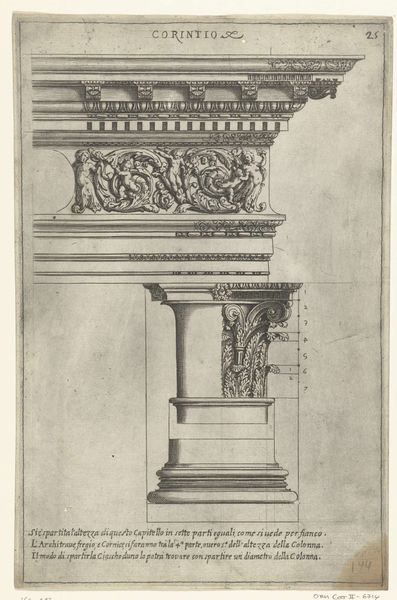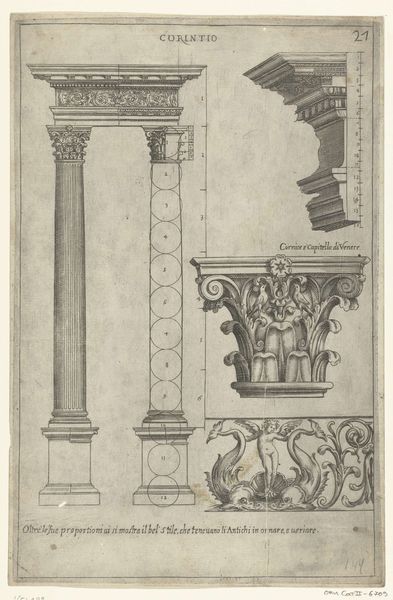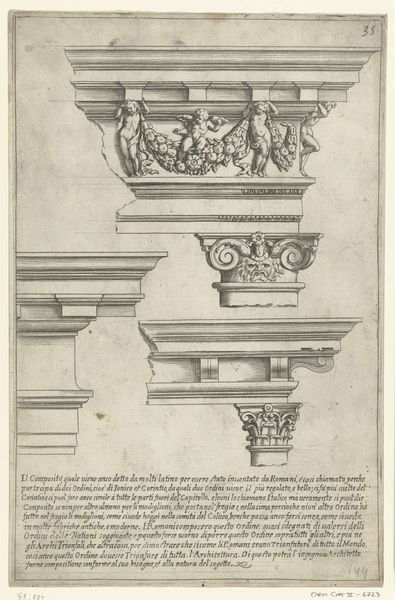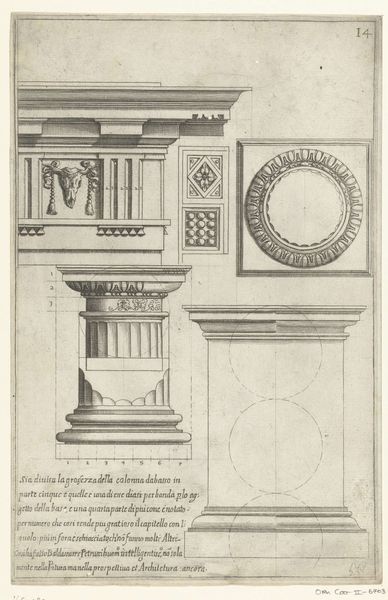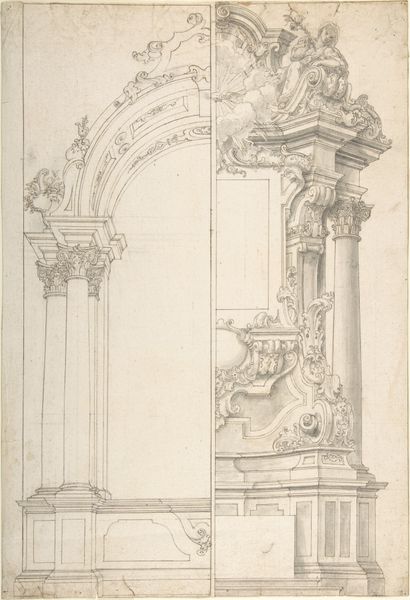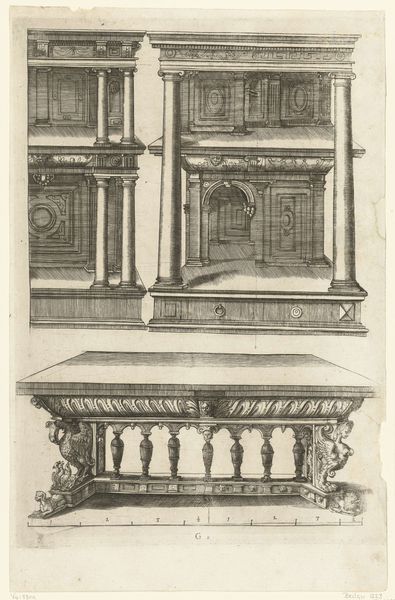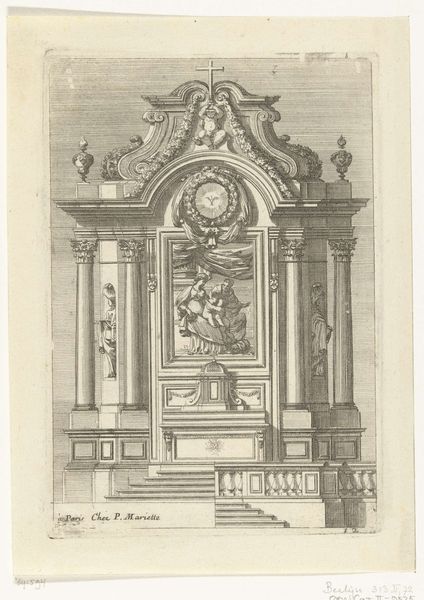
Twee Composietzuilen met voetstukken, kapitelen, een hoofdgestel en details 1636
0:00
0:00
anonymous
Rijksmuseum
drawing, engraving, architecture
#
drawing
#
baroque
#
form
#
geometric
#
line
#
engraving
#
architecture
Dimensions: height 275 mm, width 178 mm
Copyright: Rijks Museum: Open Domain
Curator: Let’s turn our attention to this fascinating engraving entitled "Twee Composietzuilen met voetstukken, kapitelen, een hoofdgestel en details"—"Two Composite Columns with Pedestals, Capitals, an Entablature, and Details." Dating from 1636, this work resides in the Rijksmuseum collection. What are your first impressions? Editor: Imposing, almost overwhelmingly detailed! There's such a density of information—architectural elements meticulously rendered, like an instruction manual aspiring to high art. The linear precision is quite striking, giving it an almost ethereal quality. Curator: Indeed. Formally, it presents a compelling study of classical architecture, specifically the Composite order. Notice how the artist uses line weight and hatching to delineate form and suggest depth. The relationship between the different components - the base, shaft, capital and entablature- demonstrates a clear interest in proportion and geometric harmony. Editor: For me, the columns represent more than mere architectural elements; they resonate with a symbolic weight accumulated over centuries. They recall notions of stability, order, and aspiration—reaching for something higher. And those decorative details, like the figures in the entablature – they feel loaded with forgotten stories. Curator: Precisely, we observe that the artist isn't merely presenting architectural forms; he is engaged in a visual exploration of ideas. He creates, essentially, a meta-architectural representation of architecture. Editor: Do you mean in its idealized form? Curator: Exactly! An exploration into the core concepts that compose the form. In this vein, one may infer how the engraving embodies an engagement with the artistic and philosophical ideas of its time, particularly concerning notions of structure, and how that relates to truth and permanence. Editor: So it becomes almost a philosophical exercise? I think it underscores how symbols shift across time—what once represented civic pride for the Romans becomes an aesthetic study centuries later, yet still carries echoes of its original intent. It's amazing how images continue speaking across the ages, albeit in different voices. Curator: I agree entirely. When one thinks about how artists sought to decode form through meticulous execution and compositional insight. Editor: It certainly offers rich possibilities for contemplation—thank you for highlighting those! Curator: My pleasure. I'll remember the rich associations these forms bear in their history.
Comments
No comments
Be the first to comment and join the conversation on the ultimate creative platform.
